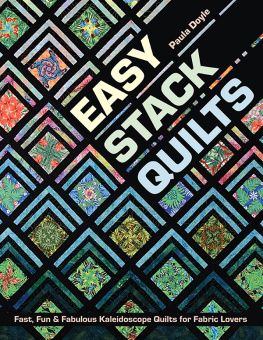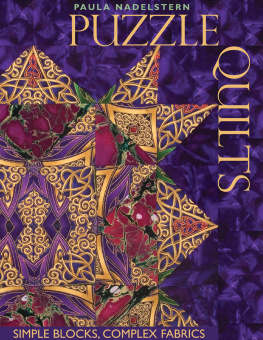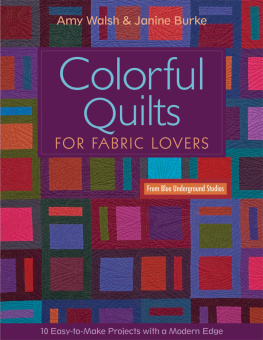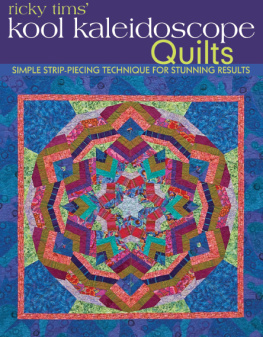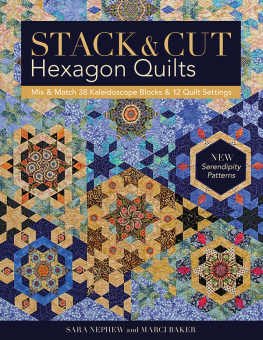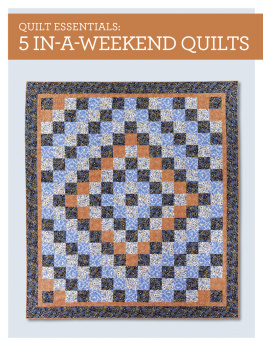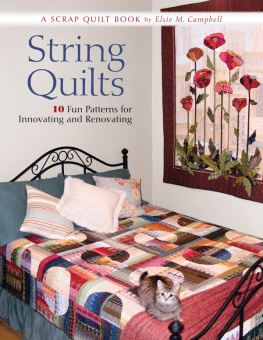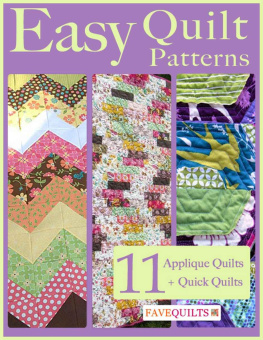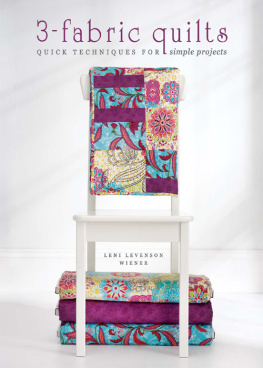PUBLISHER: Amy Marson
CREATIVE DIRECTOR: Gailen Runge
EDITORS: Christine Doyle and Liz Aneloski
TECHNICAL EDITOR: Debbie Rodgers
COVER/BOOK DESIGNER: April Mostek
PRODUCTION COORDINATOR: Tim Manibusan
PRODUCTION EDITOR: Jennifer Warren
ILLUSTRATOR: Mary E. Flynn
FLAT-SHOT PHOTOGRAPHY by Matthew Bigwood Photography, unless otherwise noted;
HOW-TO PHOTOGRAPHY by Mai Yong Vang of C&T Publishing, Inc., unless otherwise noted
Published by C&T Publishing, Inc., P.O. Box 1456, Lafayette, CA 94549
Dedication
To my loving partner and husband, Mark Doyle. Without his care, patience, and unfailing support, this book would not have been possible.

ACKNOWLEDGMENT
I would like to thank my friend Isabel Hall of Compton Quilting Services (comptonquiltingservices.co.uk) in Weybridge, Surrey, England, for working her longarm quilting magic on many of the quilts made for this book.
INTRODUCTION
I have always loved large-scale print fabrics. Whenever I go into quilt shops, Im drawn to the racks of these prints. I know I am looking at something that will be here for only a short season; next season, there will be another equally beautiful but totally different selection of fabrics. For this reason, I cannot stop myself from purchasing some yardage (usually three yards) for a future and yet-to-be-planned quilt creation if I fall totally in love with anything. Once I get the fabric home, I try to get right to it. But all too often I put the fabric away in my stash, where it used to linger in perpetual closet limbo next to a few fabric lengths given to me by well-meaning friends and family members. Well, no morethanks to Easy Stack!
A couple of years ago, I had reached the end of a major quilt project and was convalescing from breast cancer treatment. My friend Margaret Unite, who works at my local quilt shop, gave me a length of beautiful Effervescence fabric (designed by Amelia Caruso for Robert Kaufman Fabrics) and challenged me to make something with it. I had developed the idea of Easy Stack several years earlier and decided to make a few of the Four-Patch blocks from the fabric she had given me.
As I was unable to stand for very long, I decided to tear the length of fabric in half so I could rotary cut the half-width stacks (only 2122across instead of the full width of 4445) from a seated position. I found myself quickly immersed in a happy haze of stacking, cutting, and stitching; I delighted in choosing from the multiple design possibilities for each block. By the end of the day, I had a design wall full of stunning blocks that looked like millefiori jewels. The joyous thing was that each of the blocks was unique despite being made from only one fabric.
By the next day that quilt top was almost finished, and I started looking at all my treasured stash fabrics as potential Easy Stack quilts. Many of those fabrics are featured in the quilts in this book. For most of the quilts, I used just one fabric to make the Easy Stack blocks, but for some I combined blocks made from many different fabrics.
Easy Stack is simple, quick, versatile, and very fabric efficientand it produces stunning and unique results. But most of all, Easy Stack is fun! My stash is now under control, and I have a permanent reason to indulge my love of large-scale print fabrics when I find something new at the quilt shop.

CHAPTER ONE
Easy Stack Basics
Easy Stack quilts use large-scale, roller-printed fabrics to make simple kaleidoscope blocks (see Roller-Printed Fabric, at right). You can make the blocks for Easy Stack quilts by stacking and aligning four repeats of a print before rotary cutting into squares, rectangles, or triangles.
Roller-Printed Fabric
Except for batiks and digital print fabrics, most of the printed quilting fabrics available in quilt shops are roller printed. This means that the design has been engraved onto cylindrical metal rollers that are used to print the design onto the base fabric. Roller printing allows the motifs in the design to be printed precisely and spaced evenly. Each color applied to the base fabric has its own roller, and on some fabrics, each roller also prints a small registration mark on one of the selvage edges, showing the exact color of the pigment used.
Easy Stack Blocks
There are three types of Easy Stack blocks, and all measure 6 6 from raw edge to raw edge. The finished size of the Easy Stack blocks is 6 6.
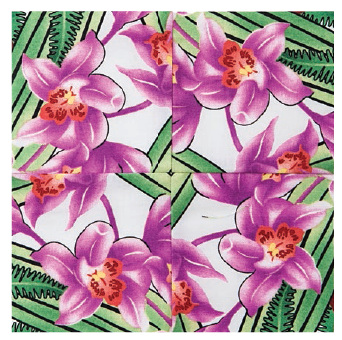
Easy Stack Four-Patch block
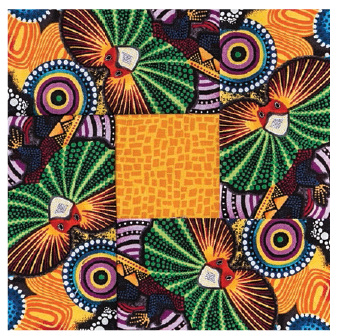
Easy Stack Bright Hopes block

Easy Stack X-Cut block
These blocks can be set into a quilt on their own, set with sashing, combined with other types of Easy Stack blocks, or set as block centers into larger blocks. There are eight quilt block settings featured in this book. Each setting option can be made as a crib size, twin size, double size, or queen/king size. See Chapter Three: Quilt Patterns for the quilt settings and projects.
Fabrics for Easy Stack
Large-scale print fabrics are collection fabrics and are usually printed only once, as the minimum print run needs to be large to make the process cost-effective. Fabric companies usually issue two collections per year: one in spring and one in autumn. So if you like a particular fabric, you should buy it when you see it in the shopsyou will probably never see it in print again. The good thing about limited-time fabric collections is that each Easy Stack quilt is likely to be a unique creation.
The most common roller size used in commercial fabric printing has a circumference of 24, so the size of the print repeat is a factor of 24. This means that the large-scale print fabric may have motifs that are repeated along the selvage edge 2, 4, 6, 8, 12, or 24 apart. The large-scale print fabric you choose for your Easy Stack quilt should be 100% quilting-weight cotton that is 4445 wide, with a motif repeat of 8, 12, or 24 as measured along the selvage edge of the fabric.
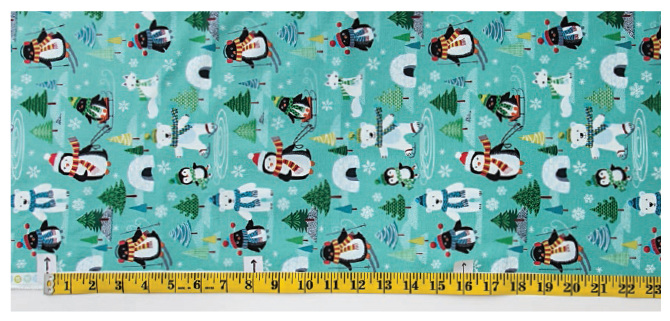
Fabric with 8 print repeat

Fabric with 12 print repeat
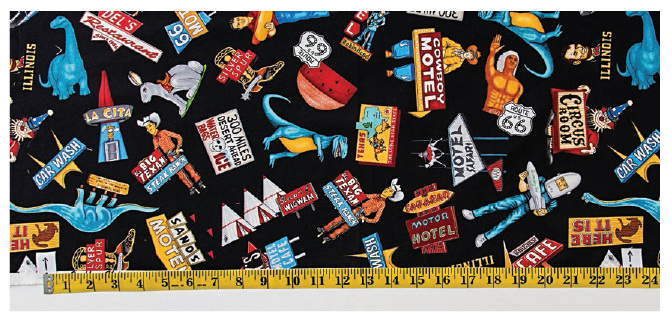
Fabric with 24 print repeat
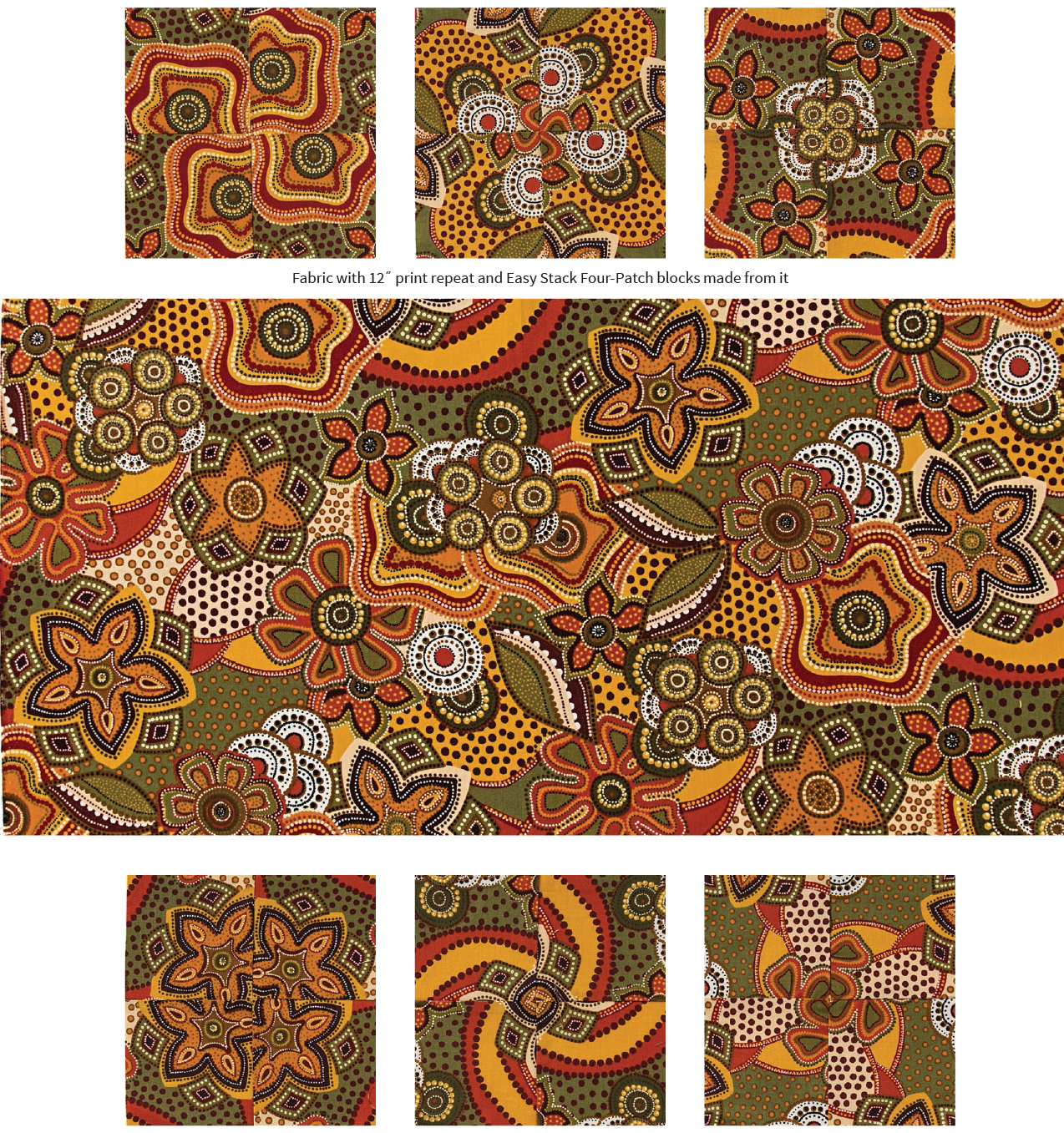

Next page
